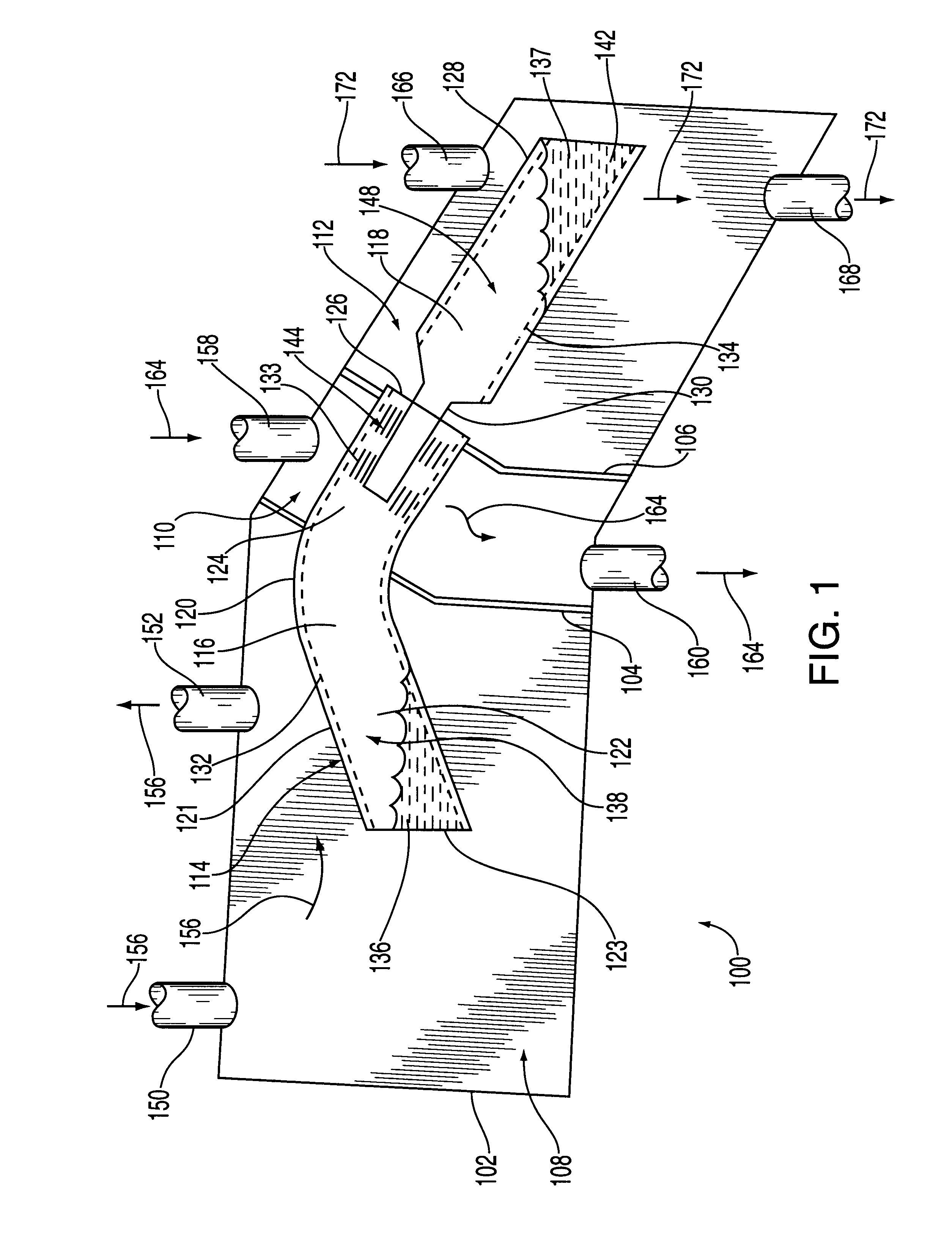Heat exchange method and apparatus
a technology of heat exchange apparatus and heat exchange method, which is applied in the direction of indirect heat exchangers, sorption machines, climate change adaptation, etc., can solve the problems of large amount of waste fluids and gases, lack of heat recovery mechanism, and inability to heat recovery, so as to reduce the size of the absorption chiller, improve the heat transfer in the cooling system, and promote the absorption of vapor.
- Summary
- Abstract
- Description
- Claims
- Application Information
AI Technical Summary
Benefits of technology
Problems solved by technology
Method used
Image
Examples
Embodiment Construction
In a preferred embodiment, a heat exchanger, or absorption chiller 100 of the present invention is depicted in FIG. 1. The absorption chiller 100 has a housing 102 fabricated from any structurally stable material, preferably metal or plastic. The absorption chiller 100 has a first bulkhead 104 and a second bulkhead 106 that segment the absorption chiller 100 sequentially into a generator 108, a condenser 110 and an evaporator 112. The generator 108, condenser 110 and evaporator 112 are all sealed from one another.
Disposed within the three chambers or sections of the absorption chiller 100 is a heat transfer device or means 114 that comprises a pair of interlocking "heat pipes" carrying working fluids. In brief, the purpose of the pair of interlocking heat pipes is to effect heat transfer between the various chambers of the absorption chiller 100 and the working fluids of the heat pipes. As a result of a plurality of heat transfer cycles between the heat pipes and the various chamber...
PUM
 Login to View More
Login to View More Abstract
Description
Claims
Application Information
 Login to View More
Login to View More - R&D
- Intellectual Property
- Life Sciences
- Materials
- Tech Scout
- Unparalleled Data Quality
- Higher Quality Content
- 60% Fewer Hallucinations
Browse by: Latest US Patents, China's latest patents, Technical Efficacy Thesaurus, Application Domain, Technology Topic, Popular Technical Reports.
© 2025 PatSnap. All rights reserved.Legal|Privacy policy|Modern Slavery Act Transparency Statement|Sitemap|About US| Contact US: help@patsnap.com



